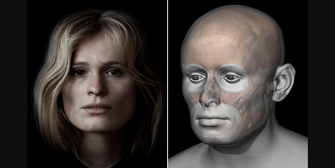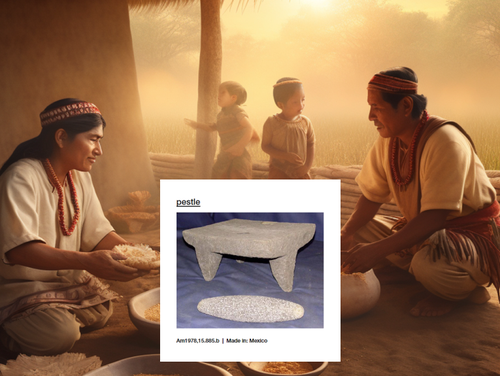AI Prototypes for Enhancing the GLAM Visitor Experience
Our concepts for how AI tools can be used to enhance the visitor experience in museums and galleries and the wider GLAM sector.
Museums and galleries face the ongoing challenge of engaging visitors in meaningful ways. We've been exploring how artificial intelligence (AI) can offer innovative solutions. Inspired by our demonstrations at the Museum + Technology conference in November 2023 and our recent webinar, we're excited to share some early AI prototypes.
While not ready for immediate museum deployment, these concepts demonstrate the power of AI. Our goal is to spark inspiration within the sector by illustrating what's possible with just a bit of experimentation.
1:1 PERSONALISED AUDIO TOURS
Every visitor brings unique needs and interests. AI can now tailor audio tours based on a user's knowledge level, time constraints, and specific curiosities. Imagine explaining an object like Charles Babbage's difference engine differently to an 8-year-old versus someone with a PhD in computer science. AI makes this level of personalisation possible.
Here's a Science Museum audio tour example we created, demonstrating how an AI agent (using OpenAI's GPT-4) can personalise the experience.
Personalising Contextual Information
Traditional museum plaques offer a single, generalised explanation. What if, instead, a QR code on each exhibit led to an AI agent? With a few simple questions, the AI could provide a tailored explanation of the object, addressing the visitor's specific interests.
An artist and an art historian might want vastly different information about the same painting. A visually impaired person would benefit from a detailed description of the artwork's visual elements. See how AI can generate this kind of personalised information in real-time:
CREATING HISTORICAL PERSONAS
AI can embody historical figures, allowing visitors to engage in dialogue. This brings history to life in a whole new way. Our prototype leverages the University of Bradford's cutting-edge 3D facial reconstructions of 12th-14th century Wigtownshire residents.

We brought one such figure, a medieval peasant named Lede, to life using AI. Lede can discuss peasant life, diet, and societal structures. Importantly, she's programmed to admit when she doesn't know an answer, avoiding inaccurate "hallucinations." See Lede in action:
Interact with Lede yourself! Ask about her daily life, work, or meals. Imagine how this technology could enliven historical exhibits.
FINAL THOUGHTS
AI holds transformative potential for museums and galleries. These prototypes highlight personalised experiences and interactions with history. Of course, AI implementation requires addressing technical, ethical, and environmental factors. Our message is that experimentation is valuable – you don't need a full policy in place to begin exploring.
We hope you are as excited about the possibilities as we are. If you need help deploying these technologies, we’d love to assist you. When you are experimenting with AI in your museum or gallery book a call with us to discuss your plans and we’ll see how we can help.

AI can be a powerful tool for museums, both for curation and to bring objects to life. We wanted to share our ideas for how museums can use this new technology to delight visitors and enhance their experience.